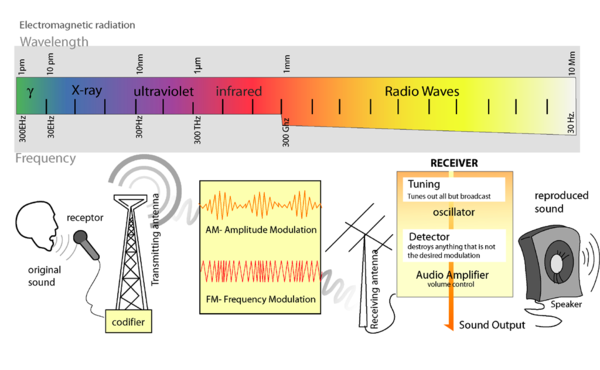Means of Communication Radio/TV
Radio waves are a form of electromagnetic radiation, created whenever a charged object (in normal radio transmission, an electron) accelerates with a frequency that lies in the radio frequency (RF) portion of the electromagnetic spectrum. In radio, this acceleration is caused by an alternating current in an antenna. Radio frequencies occupy the range from a few tens of hertz to three hundred gigahertz, although commercially important uses of radio use only a small part of this spectrum.[1]
| ELF - SLF - ULF/VF - VLF - LF/LW - MW - HF/SW - VHF - UHF - SHF - EHF Electromagnetic radio spectrum |
Other types of electromagnetic radiation, with frequencies above the RF range, are microwave, infrared, visible light, ultraviolet, X-rays and gamma rays. Since the energy of an individual photon of radio frequency is too low to remove an electron from an atom, radio waves are classified as non-ionizing radiation.
Electromagnetic radiation travels (propagates) by means of oscillating electromagnetic fields that pass through the air and the vacuum of space. It does not require a medium of transport (such as the aether). When radio waves pass an electrical conductor, the oscillating electric or magnetic field (depending on the shape of the conductor) induces an alternating current and voltage in the conductor. This can be transformed into audio or other signals that carry information. The word 'radio' is used to describe this phenomenon, and television, radio, and cell phone transmissions are all classed as radio frequency emissions.


0 Comments:
Post a Comment
Subscribe to Post Comments [Atom]
<< Home